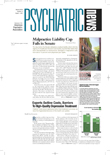The field of group psychotherapies has produced a rich literature, since it encompasses a large variety of theories and practices.
The field includes psychoanalytic, interpersonal, gestalt, transactional, crisis, supportive, cognitive-behavior, family, and other types of group psychotherapy. In addition, a large number of self-help and recovery groups, such as Alcoholics Anonymous, that are operated by people who are not psychiatrists or mental health professionals have similar goals.
The common goals of group psychotherapies are to alleviate symptoms, correct faulty perceptions, improve communication, modify behavior, and/or alter family dynamics.
Irvin Yalom, M.D., lists 11 basic factors that help to bring change through group psychotherapeutic methods: instillation of hope, universality, information exchange, altruism, correction of family dynamics, development of socialization techniques, imitative behavior, interpersonal learning, group cohesiveness, catharsis, and existential factors.
Group methods to alleviate symptoms have existed for ages, often through group rituals of a religious nature. At the turn of the 20th century, psychologists in Germany, especially Kurt Lewin, began to explore behavior in relation to environmental influences, an approach that moved the locus of behavior from within the individual to the result of forces in the interaction of the individual with outside influences.
In 1906 Joseph Pratt, M.D., an internist in Boston, was faced with treating homebound poor patients with tuberculosis and began to hold structure classes to help them learn to better manage their disease. It became evident to him that the added influence of the patients upon each other was quite helpful. Similar classes for psychiatric patients were started under the same church sponsorship.
The term group psychotherapy, coined around 1931, is usually credited to J.L. Moreno, M.D., who brought his psychodrama technique from Vienna to New York in 1925 and began to hold group sessions that became increasingly geared to therapeutic goals (Psychiatric News, May 16). Throughout this period, other psychiatrists, mainly those with psychoanalytic backgrounds, also began to use group methods. These psychiatrists included Burrows, Marsh, Zazell, Wender, and Schilder. S.R. Slavson, a psychiatrist who worked with the Jewish Board of Guardians in New York, developed group methods to treat children and adolescents. Slavson was the first president of the American Group Therapy Association, serving from 1943 to 1946. The organization’s International Journal of Group Psychotherapy began publication in 1951 and is still being published.
World War II provided a major impetus for the study and application of group methods to treat psychiatric disorders. Great Britain, which had entered the war in 1939, was faced with large numbers of psychiatric casualties, and group methods became necessary to be able to treat such a large population. The psychiatrist leaders in this movement—which was largely psychoanalytic in nature, with a Kleinian basis—included S.H. Foulkes and W. Bion. The social clubs of J. Bierer came into being at this time, as did the therapeutic communities advocated by Maxwell Jones.
The American military in World War II also used group methods to treat the large numbers of psychiatric casualties. After the war, the Veterans Administration (VA) sponsored a major research project on group psychotherapy at several VA hospitals. The study, carried out by psychiatrists F. Powdermaker, M.D., and J. Frank, M.D., was published in 1953.
The literature attests to the growth and spread of group psychotherapy. It appears to be here to stay. ▪
